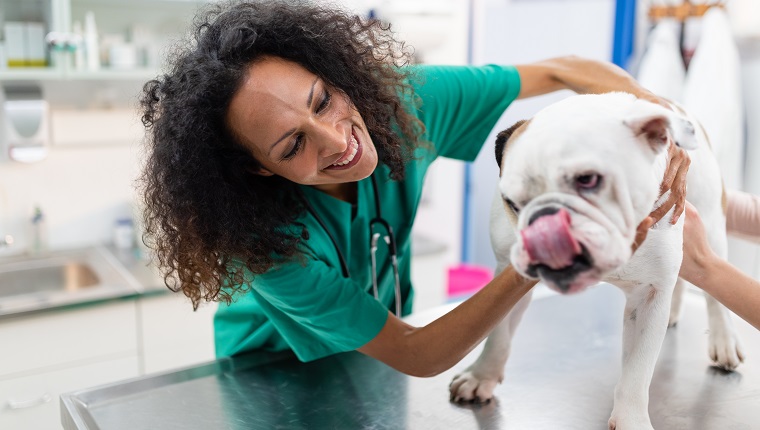Acne in dogs is an inflammatory condition that occurs when a dog’s hair follicles become irritated. This can lead to the appearance of pimples and red bumps that crop up mainly around the lips and the muzzle area.
It’s more likely to affect canines with short coats. Younger dogs are most susceptible.
If you see signs that your dog might be suffering from acne, then you should consult your veterinarian for a proper diagnosis and course of treatment. Here’s what you should know about the symptoms, causes, and treatments of acne in dogs.
Symptoms Of Acne In Dogs
Acne in dogs is a condition that usually produces red bumps, blackheads, and pustules. In some cases, swelling might also occur. In severe cases of acne in dogs, infections can set in.
If the condition goes untreated, scars may develop.
Causes Of Acne In Dogs

The cause of acne in dogs hasn’t been definitively declared. In some cases, it seems to be a genetic condition, with certain breeds more predisposed.
Some of the breeds of dog that are most likely to experience acne include:
- English Bulldogs
- Boxers
- Great Danes
- Rottweilers
- German Shorthaired Pointers
Along with the possibility genetic predisposition, dogs might also develop the condition if they experience trauma around the muzzle and chin area. Allergies can also trigger acne in dogs, along with other associated skin conditions.
In general, it affects young puppies much more than fully grown dogs.
Treatments For Acne In Dogs
If you notice that your dog is suffering from acne, your veterinarian will be able to help you deal with the condition. Your vet will perform a physical examination of your dog to confirm it is not another skin ailment. They might also want to test for ringworm, which can resemble acne in its early stages.
Your vet will most likely recommend the use of a topical treatment that contains benzoyl peroxide. This might come in the form of a lotion, a shampoo, or a gel. Make sure that you only use a benzoyl peroxide product recommended by your vet. Do not use a human acne treatment on your dog.
Additionally, vets can sometimes prescribe steroids if there is significant inflammation and swelling. If your vet prescribes steroids as part of your dog’s recovery, then you must follow the dosage and frequency instructions precisely and complete the full course of medicine.
Has your dog ever developed acne? How did you and your vet treat the issue? Tell us all about it in the comments below.




